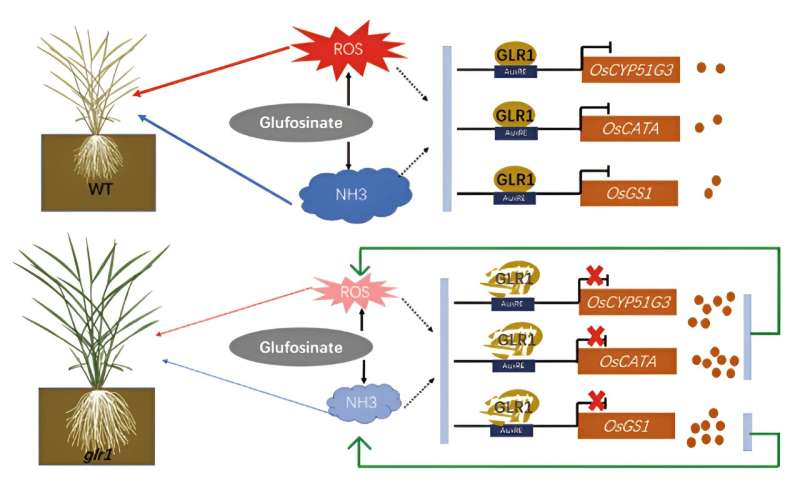This article has been reviewed according to Science X's editorial process and policies. Editors have highlighted the following attributes while ensuring the content's credibility:
fact-checked
peer-reviewed publication
trusted source
proofread
Scientists clone novel gene responsible for glufosinate resistance in rice

Researchers have cloned a novel gene responsible for glufosinate resistance in rice and conducted in-depth analysis of its functional characteristics. The team was led by Prof. Wu Yuejin from Hefei Institutes of Physical Science (HFIPS) of the Chinese Academy of Sciences (CAS).
The study was published in Plant Biotechnology Journal on Sept. 9.
Breeding and researching herbicide-resistant rice germplasm holds significant potential for effective weed management and the advancement of modern agriculture. Glufosinate has been widely used due to its non-selective broad-spectrum and high-efficiency weed control. Therefore, creating a glufosinate-resistant rice germplasm is essential.
In this study, rice seeds were subjected to heavy ion irradiation and screened for resistance to glufosinate. Two individual rice plants, glr1 and glr2, were identified as exhibiting resistance.
The results demonstrated that the glr1 mutant displayed significant resistance to glufosinate. Through map-based cloning and functional analysis, the researchers unveiled that the GLR1 gene encodes ARF18, which belongs to the ARF family of auxin response factors.
Additionally, they found that GLR1/ARF18 could directly bind to the promoters of downstream genes, namely OsGS1, OsCYP51G3, and OsCATA, consequently inhibiting their expression.
In the wild type, treatment with glufosinate prompted the activation of the GLR1 gene, resulting in the suppression of downstream genes associated with the clearance of ammonia and reactive oxygen species (ROS). This hindrance in timely clearing of accumulated ammonia and ROS within the plant ultimately led to its demise.
Conversely, when the GLR1 gene is mutated, its ability to inhibit the expression of relevant genes is impaired. As a result, the proteins encoded by these genes remain active, facilitating the efficient clearance of accumulated ammonia and ROS. This, in turn, prevents plant damage and death.
More information: Yan Ren et al, Precision editing of GLR1 confers glufosinate resistance without yield penalty in rice, Plant Biotechnology Journal (2023). DOI: 10.1111/pbi.14168
Journal information: Plant Biotechnology Journal
Provided by Chinese Academy of Sciences





















